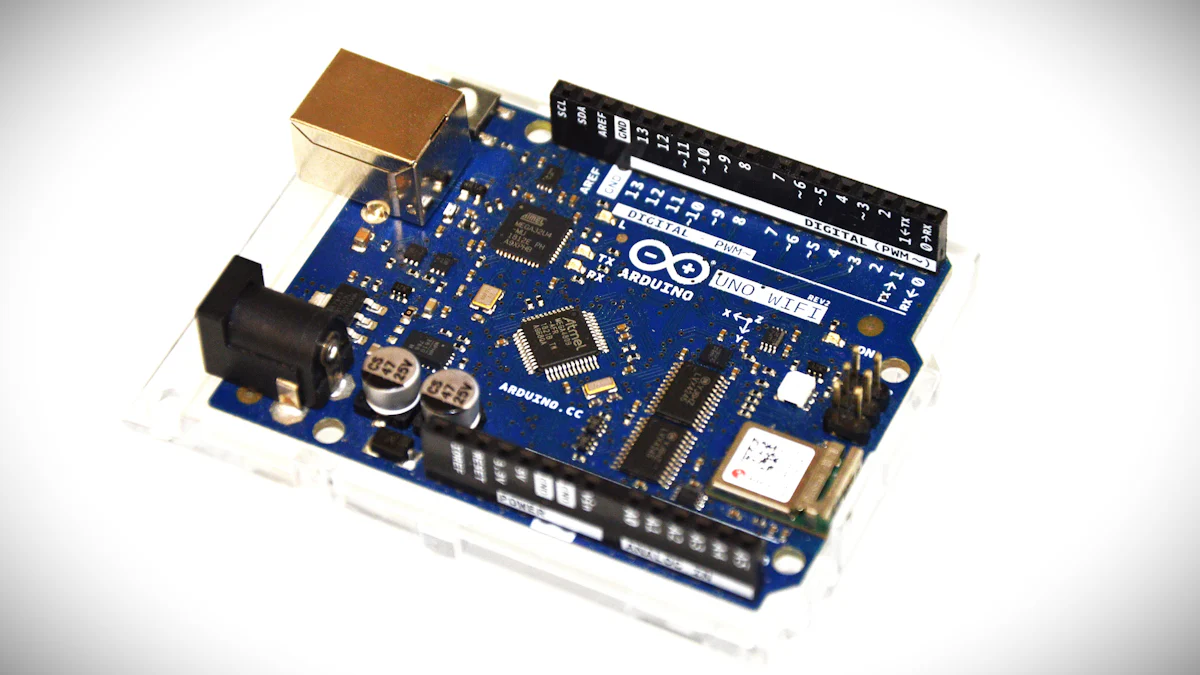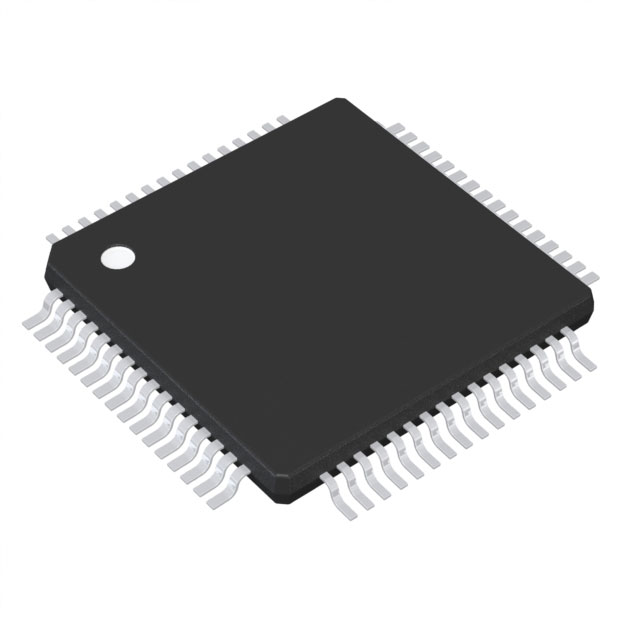Unlock MSP430F149IPMR for Smarter IoT Solutions

The MSP430F149IPMR stands out as a low-power microcontroller tailored for IoT and wireless applications. Its 16-bit RISC architecture ensures fast processing while maintaining ultra-low power consumption. Designed for embedded systems, it features integrated peripherals like a 12-bit ADC, SPI, and UART. These capabilities, combined with advanced power management, make it ideal for smart home and industrial IoT solutions.
Key Takeaways
The MSP430F149IPMR microcontroller uses very little power. This makes it great for battery-powered IoT devices. It works well for smart homes and factories.
Built-in tools like ADC, UART, and SPI make designing easier. These tools reduce extra parts, making it more efficient and flexible.
It supports wireless communication with Zigbee and BLE protocols. This helps connect easily to IoT networks for smart homes and factories.
Features of MSP430F149IPMR for IoT

Low Power and Efficiency
The MSP430F149IPMR excels in low-power performance, making it ideal for IoT devices that prioritize energy efficiency. Its ultra-low power consumption ensures extended battery life, even in demanding applications. The microcontroller operates within a supply voltage range of 1.8 V to 3.6 V, offering flexibility for various power sources. Below is a summary of its power-saving features:
Feature | Specification |
|---|---|
Low Supply Voltage Range | 1.8 V to 3.6 V |
Active Mode Power Consumption | 280 µA at 1 MHz, 2.2 V |
Standby Mode Power Consumption | 1.6 µA |
Off Mode Power Consumption | 0.1 µA (RAM Retention) |
Wakeup Time from Standby | Less Than 6 µs |
Compared to other microcontrollers, the MSP430F149IPMR stands out with its active mode consumption of 280 µA and standby mode consumption of just 1.6 µA. These features make it a preferred choice for IoT devices requiring long battery life and efficient operation.
Integrated Peripherals for IoT
The MSP430F149IPMR simplifies IoT development with its versatile integrated peripherals. These peripherals reduce the need for external components, streamlining the design process. Key peripherals include:
ADC for 12-bit analog-to-digital conversion.
UART and SPI for serial communication.
GPIO for general-purpose input/output.
Power management features for extended battery life.
The table below highlights the functionality of these peripherals:
Peripheral Type | Functionality |
|---|---|
ADC | 12-bit analog-to-digital conversion |
UART | Serial communication |
SPI | Serial communication |
GPIO | General-purpose input/output |
Power Management | Low power consumption for battery life |
These integrated features make the MSP430F149IPMR a powerful tool for IoT applications, reducing complexity and enhancing efficiency.
Wireless Communication Capabilities
The MSP430F149IPMR supports seamless integration with wireless modules, enabling IoT devices to connect and communicate effectively. Its compatibility with protocols like Zigbee and BLE allows developers to build robust wireless sensor networks. This capability makes it suitable for applications such as smart home automation and industrial IoT systems.
By combining low power consumption, integrated peripherals, and wireless compatibility, the MSP430F149IPMR provides a comprehensive solution for IoT development.
Setting Up MSP430F149IPMR for IoT
Tools and Components Needed
Setting up the MSP430F149IPMR for IoT applications requires specific tools to ensure smooth development and debugging. The table below outlines the essential tools:
Tool Name | Description |
|---|---|
Code Composer Studio (CCS) | Integrated Development Environment for application development |
MSP-FET430UIF | Programming and debugging tool for the MSP430 microcontroller |
These tools provide a robust foundation for programming, debugging, and optimizing IoT applications.
Step-by-Step Configuration
Configuring the MSP430F149IPMR involves several steps to ensure proper functionality:
Power Supply Setup: Connect the microcontroller to a stable power source within the 1.8 V to 3.6 V range. Use decoupling capacitors to stabilize the voltage.
Clock Configuration: Verify the external clock source and configure the clock registers for accurate timing.
Peripheral Initialization: Enable and configure peripherals like ADC, UART, or SPI based on application requirements.
Code Development: Write and upload the application code using Code Composer Studio.
Debugging: Use the MSP-FET430UIF to debug the program and inspect the microcontroller's state.
Common challenges during configuration include power supply issues, clock source failures, and inconsistent I/O performance. Address these by ensuring proper voltage levels, verifying pin configurations, and using external resistors where necessary.
Interfacing with Wireless Modules
The MSP430F149IPMR supports seamless integration with wireless modules like Zigbee or BLE. To interface with these modules:
Connect the module to the microcontroller using UART or SPI communication.
Configure the communication protocol in the application code.
Test the connection by sending and receiving data packets.
This setup enables the microcontroller to function as a low-power IoT node, ideal for applications like smart home automation or industrial monitoring.
Applications of MSP430F149IPMR in IoT
Smart Home Solutions
The MSP430F149IPMR plays a vital role in enabling smart home solutions. Its low power consumption makes it ideal for battery-powered devices, ensuring long-lasting performance. Integrated peripherals like ADC, UART, and SPI enhance its versatility, allowing it to support a wide range of smart home applications.
Some examples of smart home solutions that utilize this microcontroller include:
Home automation systems for controlling lights, thermostats, and security devices.
Smart locks and access control systems.
Energy-efficient appliances like smart refrigerators and washing machines.
This microcontroller's ability to operate efficiently in low-power environments ensures reliable performance in devices that require continuous operation. Its compatibility with wireless communication protocols further enhances its functionality, enabling seamless integration into smart home ecosystems.
Industrial IoT Use Cases
The MSP430F149IPMR is well-suited for industrial IoT applications due to its low-power architecture and high-performance capabilities. It addresses the challenges of industrial environments by offering features like integrated peripherals and multiple low-power modes.
Feature | Description |
|---|---|
Low Power Consumption | Multiple low-power modes make it suitable for battery-operated devices. |
Integrated Peripherals | Includes ADC, UART, SPI, and I2C for versatile functionality. |
High Performance | Designed for low-power and high-performance applications, ideal for IoT. |
Key industrial IoT use cases include:
Use Case | Specific Applications |
|---|---|
Data Acquisition Systems | Temperature Monitoring, Environmental Monitoring |
Industrial Control Systems | Motor Control, Process Control |
The MSP430F149IPMR's design ensures efficient operation in embedded systems, making it a reliable choice for industrial IoT devices. Its ability to process data from sensors and control industrial machinery highlights its versatility in this domain.
The MSP430F149IPMR offers low power consumption, integrated peripherals, and wireless communication capabilities, making it a top choice for IoT applications. Developers can leverage its wireless features for tasks like data collection in sensor networks:
Application Type | Description |
|---|---|
Wireless Sensor Networks | Used in nodes of wireless sensor networks for data collection and transmission. |
To explore its potential, developers can utilize these resources:
Optimize power consumption through efficient coding practices.
Refer to the datasheet and user manual for programming guidance.
Use it in embedded systems, IoT devices, and sensor nodes.
With its versatile architecture and robust features, the MSP430F149IPMR empowers developers to create smarter IoT solutions.
What makes the MSP430F149IPMR ideal for IoT applications?
The MSP430F149IPMR combines ultra-low power consumption, integrated peripherals, and wireless compatibility. These features make it suitable for energy-efficient and connected IoT devices.
How can developers optimize power consumption in IoT projects?
Developers can use low-power modes, efficient coding practices, and proper peripheral configurations. These methods extend battery life and improve energy efficiency.
Which wireless protocols are compatible with the MSP430F149IPMR?
The MSP430F149IPMR supports Zigbee and BLE modules. These protocols enable seamless communication in wireless sensor networks and IoT ecosystems.
💡 Tip: Refer to the MSP430F149IPMR datasheet for detailed configuration guidelines and best practices.
See Also
Enhancing Process Control with AD74413RBCPZ Unlocking
Unveiling Essential Automotive Features of FREESCALE MCF5251CVM140
SPC56 Microcontrollers: Simplified Solutions for Engine Control
Enhancing Automotive Performance with NXP MC9S12 Microcontrollers
CALL US DIRECTLY
(+86)755-82724686
RM2508,BlockA,JiaheHuaqiangBuilding,ShenNanMiddleRd,Futian District,Shenzhen,518031,CN
www.keepboomingtech.com sales@keepboomingtech.com
